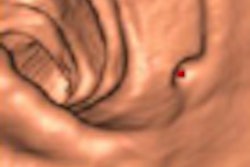Dear AuntMinnie Member,
At the top of the news today is a report that President Bush followed through on a threat to veto a bill to eliminate a 10.6% pay cut in Medicare physician payments. Bush may not be able to prevent the inevitable, however, as the bill had a veto-proof majority when it passed both houses of Congress last week. Learn the latest in this ongoing drama by clicking here.
In other regulatory news, a new report has been issued from the U.S. Government Accountability Office (GAO) that addresses strategies for reducing Medicare spending on imaging services. The report states that Medicare spending on imaging grew nearly 50% from 2000 to 2006, with much of that due to growth in physician in-office imaging.
The report recommends that Medicare take a more proactive role to reduce spending by adopting tools such as preauthorization of imaging studies and profiling of physician usage patterns. But that proposal is going over like a lead balloon with imaging industry groups, who say there are better ways to cut overutilization. Learn more by clicking here.
FDA warning on CT
In our last regulatory item, the U.S. Food and Drug Administration (FDA) issued an advisory letter yesterday warning healthcare providers to be aware of cases in which CT scans cause possible interference with medical devices. Although there have been only a few cases, the FDA says medical staff should take precautions to minimize adverse events. Find out what to do by clicking here.
VR in the military
Meanwhile, in our Healthcare IT Digital Community, staff writer Wayne Forrest reports on the U.S. military's initiative to adopt voice recognition (VR) technology across all facilities in the military healthcare system.
The military has shifted to VR in part to address shortcomings in the previous approach, which used a keyboard-based data entry method. Find out how the move is benefiting military healthcare by clicking here.
Finally, also learn about an effort to develop DICOM data standards for teledermatology. You'll find that article by clicking here, or visit the Healthcare IT Digital Community at healthcareit.auntminnie.com.



















